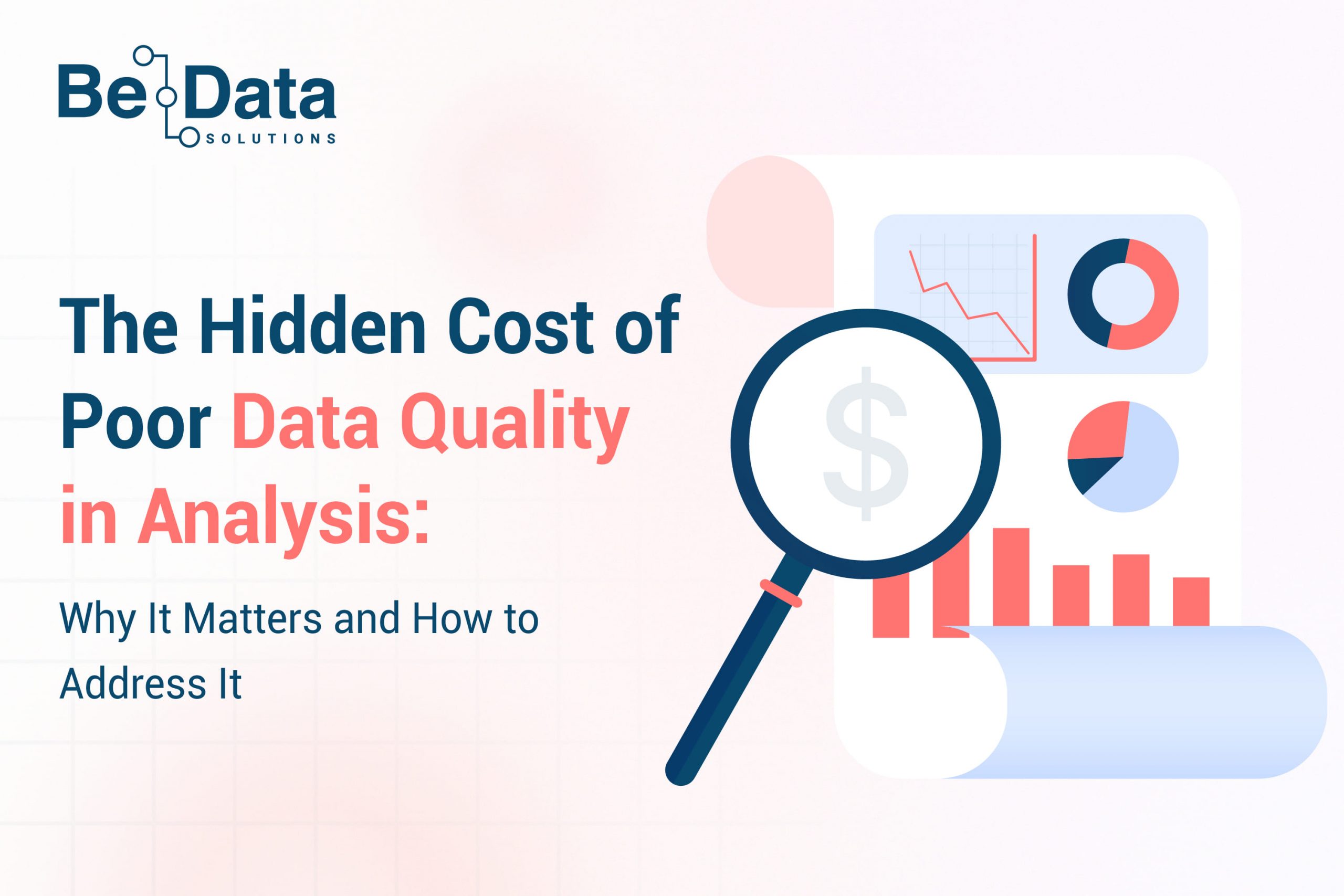
In the world of data analysis, working with datasets often reveals hidden challenges, chief among them, data quality issues. Data analysts and data scientists frequently encounter null values, inconsistent date formats, and mislabeled fields that complicate their ability to extract meaningful insights. These challenges, while seemingly minor, can have significant consequences if left unaddressed.
This blog explores the hidden costs of poor data quality, the common pitfalls analysts face, and actionable strategies to ensure accurate and meaningful analysis.
The Reality of Data Quality Issues
Imagine you’re tasked with analyzing a dataset containing millions of rows of customer information. At first glance, it seems comprehensive. But as you dive deeper, you notice irregularities:
- Null Values: Fields that should contain data are inexplicably empty.
- Inconsistent Date Formats: Some entries are formatted as DD-MM-YYYY, while others use MM-DD-YYYY or even DD-MMM-YYYY.
- Erroneous Entries: Fields like “gender” or “date of birth” contain irrelevant or incorrect information.
These issues make it difficult to proceed with analysis without addressing them first. Analysts often resort to writing automated scripts to clean and standardize data. For instance, they might write code to reformat dates into a consistent format. But automation has its limits; anomalies like “29-APR-2023” can slip through, especially in datasets with millions of rows that are impossible to manually inspect.
Faced with these hurdles, analysts often make one of two choices:
- Exclude Poor-Quality Data: Analysts may decide that a small percentage of problematic data (e.g., 5–20%) is insignificant and remove it from the dataset.
- Include It Without Fixing Issues: Alternatively, they may integrate the flawed data, relying on algorithms to process it as-is.
Both choices can undermine the reliability of the analysis.
Why Ignoring Data Quality Is Risky
While excluding or ignoring poor-quality data might seem like a practical solution, it carries significant risks:
- Skewed Insights: The excluded data might represent a critical segment of your audience, such as high-value customers or underserved groups. Missing out on these insights could lead to poor decision-making.
- Distorted Findings: Including erroneous data in analysis introduces noise that can skew results, leading to inaccurate conclusions.
- Erosion of Trust: If stakeholders discover that data quality issues were overlooked, it can damage their confidence in both the analysis and the team responsible.
Data quality issues aren’t just technical hurdles, they’re strategic roadblocks that can impact the entire organisation.
The Invisible Nature of Data Quality Work
One reason data quality often takes a backseat is its invisibility. Stakeholders typically see only the final results of an analysis, not the foundational work that ensures accuracy.
For a data analyst, spending weeks cleaning data may feel like a thankless task. When faced with a tight deadline, analysts might question whether addressing data quality is worth the effort, especially if leadership pressures them to deliver insights quickly.
This disconnect leads to a cycle where data quality issues are either ignored or addressed in a superficial, ad hoc manner, rather than being systematically resolved.
Whose Responsibility Is Data Quality?
Another barrier is ambiguity around who owns data quality.
- Analysts and Data Scientists: They may view their role as analyzing data, not fixing upstream issues. While they might apply quick fixes to complete their analysis, they often don’t address root causes.
- Data Engineers: These teams are often tasked with building pipelines but may not have the bandwidth to address quality issues in source systems.
- Source System Teams: Developers or product managers responsible for source systems may not be aware of downstream issues caused by poor data quality.
This lack of clear ownership creates a gap where data quality issues persist, impacting every subsequent step in the analytics process.
The Importance of Addressing Data Quality
Failing to address data quality is like building a house on a shaky foundation. Even the most advanced analytical models won’t produce reliable results if the input data is flawed. Clean, accurate data ensures:
- Better Decision-Making: High-quality data leads to more accurate insights, enabling businesses to make informed decisions.
- Increased Efficiency: Spending time upfront on data quality reduces rework and prevents errors from compounding downstream.
- Stronger Stakeholder Confidence: Transparent, reliable analysis builds trust with decision-makers.
A Practical Approach to Data Quality
Data analysts and organisations can adopt several strategies to address data quality challenges effectively:
- Flag Issues Early
Communicate data quality problems as soon as they’re identified. Share examples with stakeholders and explain how they could impact the analysis. Transparency helps set realistic expectations. - Document Assumptions and Limitations
If you’re unable to resolve all data quality issues, clearly document them in your analysis. For example, note if 5–10% of the dataset was excluded due to inconsistencies or errors. This ensures stakeholders understand the limitations of the findings. - Invest in Data Quality Tools
Automated tools can help identify and resolve data quality issues more efficiently. Advocate for resources that enable proactive data cleansing and validation. - Foster a Data-Quality-First Culture
Organisations need to prioritize data quality at every level, from data entry to analysis. This requires cross-functional collaboration, training, and a commitment to addressing root causes rather than applying temporary fixes.
Improve your Data Quality
Data quality is the foundation of effective analytics. Ignoring it can lead to wasted resources, inaccurate insights, and missed opportunities.
At Be Data Solutions, we understand the challenges organisations face when dealing with poor-quality data. Our team specializes in helping organisations identify, address, and prevent data quality issues. Whether you’re working with a new dataset or tackling persistent problems in your existing processes, we’re here to help.
Contact us at hello@bedatasolution.com to learn how we can support you in building a solid foundation for your analysis. Don’t let poor data quality hold your business back, reach out today!
By taking data quality seriously, you can unlock the full potential of your datasets, make smarter decisions, and build lasting trust in your analytical insights. Let’s work together to ensure your data is as reliable as the insights you derive from it.
